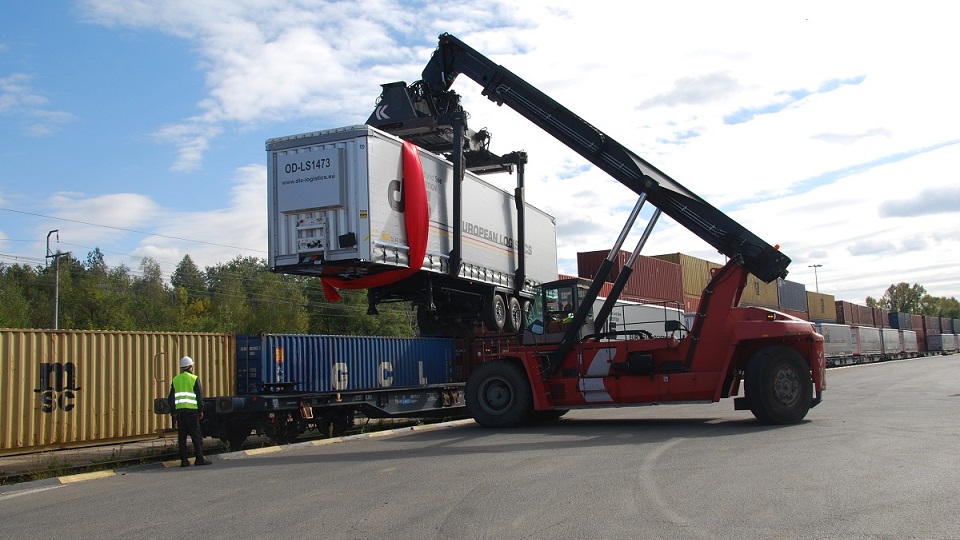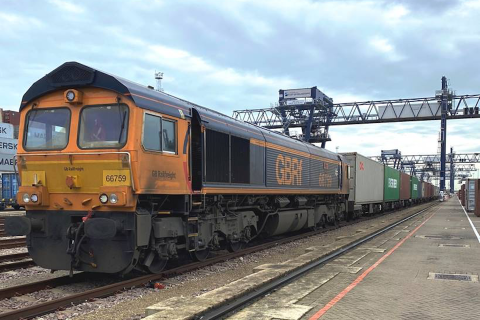Is a true shift to rail possible in Poland?

In Poland the expenditure on the development of transport infrastructure as well as intermodal hubs increased significantly between 2000 and 2020. Did this development contribute to a shift to rail? And is a shift from road to rail possible at all? Jana Pieriegud from the SGH Warsaw School of Economics will answer these questions at the RailFreight Summit in Poznan, to be held on 11, 12 and 13 May 2020.
Professor Jana Pieriegud, head of the Department of Infrastructure and Mobility Studies is responsible for a 120-page analysis of the Polish rail freight market, prepared for the European Commission in 2019. The country has a lot of potential, but some serious challenges remain.
Little growth
Between 2004-2018 the volume of rail freight transport performance in Poland increased by only 14 per cent: from 52.3 to 59.6 billion tonne-kilometre, Pieriegud writes in her Analysis of the potential of the development of rail container transport market in Poland. “At this stage the potential for a further growth (2019-2028) is rather low, it may reach about 65 billion tonne-kilometre.”
She sums up several reasons: a low transit share of transit traffic (7 per cent), a high dynamic of road transport, no substantial changes in the commodities’ structure of rail freight transport, and substantial railway infrastructure upgrade projects until 2023, which hamper rail operators’ competitiveness and efficiency.
Government strategy
Overall, there is a lack of centralised action when it comes to the development of the rail freight market, she remarks. This is especially true for intermodal facilities. “There is a lack of government strategy for the development of intermodal transport and rail-road terminals, including a list of priority projects. There is no unit dedicated to rail-road transport development within the Polish government administration”, she writes.
Similarly, there is no centralised coordination of the handling of train traffic at border crossings with non-EU countries, or management of the border infrastructure development. This is done by private parties, while these border crossings are crucial for the traffic streams between Poland and China, and one of the main assets of its geographic location.
National Railway Programme
Poland does have an infrastructure plan in place. This is laid out in the National Railway Programme until 2023. It includes projects co-financed from EU funds and other, national investments. As of December 2018, works were being carried out at 155 locations at a total cost of 32 billion Polish Zloty (7.4 billion euros).
Although these works are promising major improvements, at the moment it jeopardises the competitive position of rail freight. Construction works lead to temporary closures, reduced less capacity and reduced efficiency. Moreover, there are a number of sections, both on the Baltic – Adriatic and North Sea – Baltic corridor, that will not meet the standards by 2030, Pieriegud notes in the report.
Efficient terminals
The academic points out that investments should also include the construction of new terminals at locations as Kraków, Lódź/Stryków, Warsaw, Wroclaw and Eastern Poland, as well as an additional terminal near the Belarusian border, with a possibility of an extended 1520 mm-gauge line. Existing terminals could be increased in efficiency, for instance by facilitating 740-metre long trains.
These are only a few highlights of her recommendations. At the RailFreight Summit Poznan, she will elaborate the prerequisites for further growth. Do you want to attend this conference? It takes place on 11, 12 and 13 May in Poznan. Registration is still open.
You just read one of our premium articles free of charge
Want full access? Take advantage of our exclusive offer





